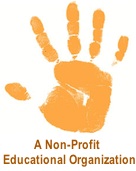 Letter From The President
Letter From The President
by Paul Robear
Ancient cultures used music and sound for many reasons but primarily to influence states of consciousness in ceremonies and as way to promote psychological and physical health. Music, rhythmic drumming, rattling and chanting have been an essential part of most cultures’ rituals and is still in use worldwide. Today, the idea that auditory stimulation can affect mood state and consciousness is widely accepted. In recent time there has been significant research that documents that the rhythmic beat of rattle or drums has a profound effect on our brain activity and induces a profound range of brainwave states.
In shamanic traditions, drums were used in periodic rhythm to transport the shaman into other realms of reality. The vibrations from this constant rhythm affected the brain in a very specific manner, allowing the shaman to achieve an altered state of mind; a trance state.
It was in the early 1970’s, Anthropologist Dr. Felicitas Goodman determined through her research that using a steady rhythmic percussive sound of around 200 to 210 beats per minute was optimum to produce a trance experience. This corresponds well into the Theta brainwave state range of 4 Hz to 8 Hz associated with meditation.. To amplify the experience much like tuning a radio to get a particular station, Dr. Goodman used Ritual Postures to induce a variety of brain states and categories of experiences.
The original research into the effects on the human physiology during the practice of Ritual Postures was documented by Dr. Goodman in her book “Where the Spirits Rides the Wind”:
https://www.cuyamungueinstitute.com/articles-and-news/original-neurophysiological-research/
For our 38-year history we’ve been nurturing this deeper understanding how we achieve a physiologically based, innate and natural shift of consciousness through Ritual Posture. This research is at the foundation of the Cuyamungue Institute. Our experience continues to confirm this profound area of transforming consciousness through the safe, effective technique of Ritual Postures. We invite you to join us for a workshop at Cuyamungue in 2016!
Paul Robear
President / Executive Director
Cuyamungue: The Felicitas D. Goodman Institute
![]()
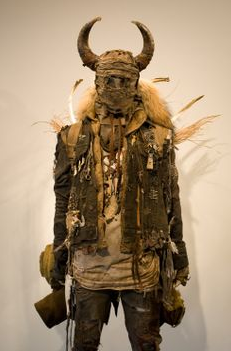 Path of the Sacred Clown
Path of the Sacred Clown
by Peggy Andreas
This is the second article in a three part series about Tribal Paths. The first, published in last months newsletter is Path of the Sacred Warrior and the third is Path of the Sacred Shaman will follow next month.
In my last article, I wrote of the Native American spiritual path of the Sacred Warrior. To Native Americans, the path of the Sacred Clown is ALSO considered a spiritual calling, essential to the smooth functioning of the tribe.
Most every tribe had their Clowns. The Oglala and Lakota called them Heyoka (“crazy”), the Arapaho called them Ha Hawkan (“holy idiot”), and both peoples considered them religious specialists. The Salish people honor the memory of a Clown who (not so long ago) challenged a missionary. The missionary was enticing people to come to his church by handing out little mirrors to them while urging them to cover their bodies with white folks’ clothes. It is told with a smile that the Clown (a woman!) walked into the church one Sunday wearing nothing but a hat and old shoes! —————–> Full Article
![]()
How do you pronounce Cuyamungue? … Good question!
By Paul Robear
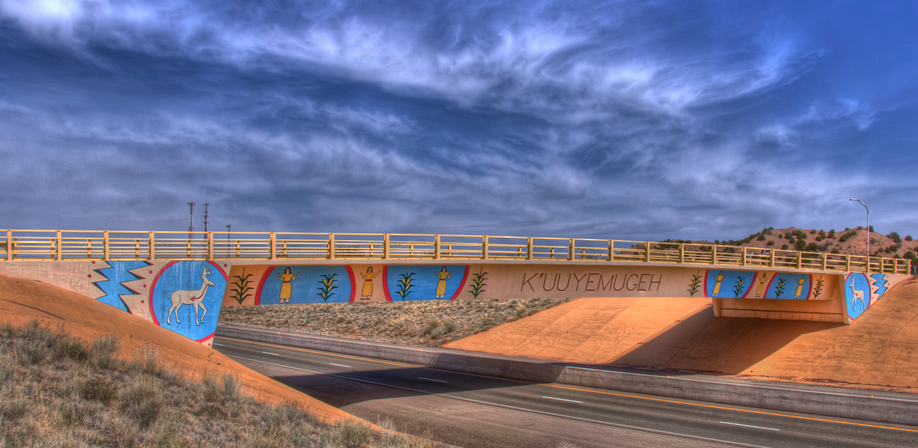
Cuyamungue Bridge over 285 spells it “Kuuyemugeh”
Don’t feel bad if you have a hard time pronouncing – almost everyone finds it challenging at first. Cuyamungué is spelled many different ways in the literature: “Cuyammiqué,” “Cuyo Monque,” “Cuyamanque,” “Cuya Mangue,” “Cuyamonge,” Ku Ya-mung-ge,” “Kyamunge” and “Kuuyemugeh.”
Original more than twenty years ago on my first visit to the Institute I learned to pronounced it “coo-yuh-MOON-gay.” Last year a few of us went out to lunch at a nearby restaurant and got into a conversation with the locals at the table next to us. When asked where we are from, I politely answered with the name of the Institute “Cuyamungue-Institute.” I may have said it too fast, like one word. The man squinched his forehead, “Where?” So i said it a bit slower this time… separating the words “Cuyamungue … Institute.”. “Ohhhh” he said you mean “coo-yuh-moon-GAY!” with a strong emphasis on the last syllable. Somehow this really impressed all of us and when we returned to the Institute we would find ourselves at gatherings chanting “Coo-yuh-moon-GAY! “Coo-yuh-moon-GAY! “Coo-yuh-moon-GAY!
The name “Cuyamungué” is a Tewa geographical name meaning “pueblo ruin where they threw down the stones.” Native Americans often name places for physical landmarks with which they are familiar. This name refers to a hill where huge stone boulders are “thrown down.” Today it is known as, “the hill where the stones are slipping.” Needless to say the land of the Institute is a very sacred and historically significant place to Tewa people.
![]()
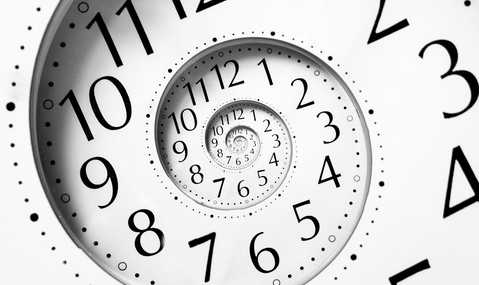 Quantum Physics the End of Dualism?
Quantum Physics the End of Dualism?
by Thomas Herold
The exploration on consciousness will be an increasingly subject in Quantum Physics as any observation is changing the results of the experiments we perform. At the very small the illussion of matter becomes more obvious and the realization that nothing is independend from each other more conclusive. ———–> Full Article
![]()
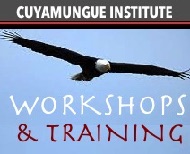 2016 Workshops, Events and Training at Cuyamungue:
2016 Workshops, Events and Training at Cuyamungue:
Each workshop contains a specifically designed series of ritual postures to provide the context for a journey of self-discovery. We go deep within utilizing the Cuyamungue Method – which includes a established ritual journey method. Introductory workshops are are prerequisites for advanced classes.
Here is the workshops and events for 2016 at the Cuyamungue Institute, so you can get the jump-start on making your plans to join us this season. future. Feel free to ask questions.
![]()
April 23rd – 29th – Volunteer Week at CI – If interested, ask us for details
April 30th / May 1st – Maypole Celebration
May 26 – 29 – Board of Directors Meeting
June 17th – 21st – Initiatory Training
July 27th – 31st – Initiatory Training
August 3 – 7 – Initiatory Training – Advanced Course
August 16 – 21 – Instructor Training – Contact us
August 23 – 28 –Men’s Conclave Contact us
September 21st – 25th – Masked Trance Dance – Contact us
The Cuyamungue Institute, like many non-profit organizations, has limited resources. We are proud of the scope of work we have already accomplished. However, there is much more to do, and we depend upon your support. We always use our all resources with great care. Our focus and key priority to continue to ensure the financial stability of CI for the future.
There are several ways to participate:
- Attend workshops at the Institute – Bless yourself and the Institute! Workshop fees directly support the land and buildings.
- Be a Volunteer – Ask about existing, on-going projects you can help with. Or suggest projects that you can work on, fund, or both!
- Personal Donations – 100% of your donations and gifts go directly to the Institute, and are tax deductible.
- Corporate Donations – Your company can have a tremendous impact. Also ask us how we can bring our work to your company!
- Planned Giving – Including the Cuyamungue Institute in your estate plans can help you accomplish a charitable goal while realizing potential significant tax savings and supporting the future of the Cuyamungue Institute. More Information
Please consider making a donation by clicking here. Ongoing research and new applications of this work with Ritual Postures is only possible because of donations made by people like you. Laura Lee, our Director of Outreach and Development, is available to answer your questions and to provide more information. Contact her at lauralee@cuyamungueinstitute.com ![]()
![]() How to Submit an Article: As part of expanding our Cuyamungue Institute community, you are invited and encouraged to participate. Share how you use the Cuyamungue Method in your chosen field. We are also open to other topics, with the emphasis on the posture work, and research and or experience. More information
How to Submit an Article: As part of expanding our Cuyamungue Institute community, you are invited and encouraged to participate. Share how you use the Cuyamungue Method in your chosen field. We are also open to other topics, with the emphasis on the posture work, and research and or experience. More information
![]()
![]() Thanks for reading! Please forward this to your friends and acquaintances who will enjoy learning more about us, and please let me hear from you! I am most happy answer any and all questions about the Institute or the Cuyamungue Method. We welcome all correspondence. Not already subscribed? Subscribe Here.
Thanks for reading! Please forward this to your friends and acquaintances who will enjoy learning more about us, and please let me hear from you! I am most happy answer any and all questions about the Institute or the Cuyamungue Method. We welcome all correspondence. Not already subscribed? Subscribe Here.
Email me directly at paulrobear@cuyamungueinstitute.com . 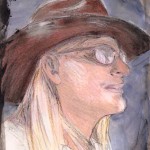
Blessings,
Paul Robear
President / Executive Director
Cuyamungue – The Felicitas D. Goodman Institute


